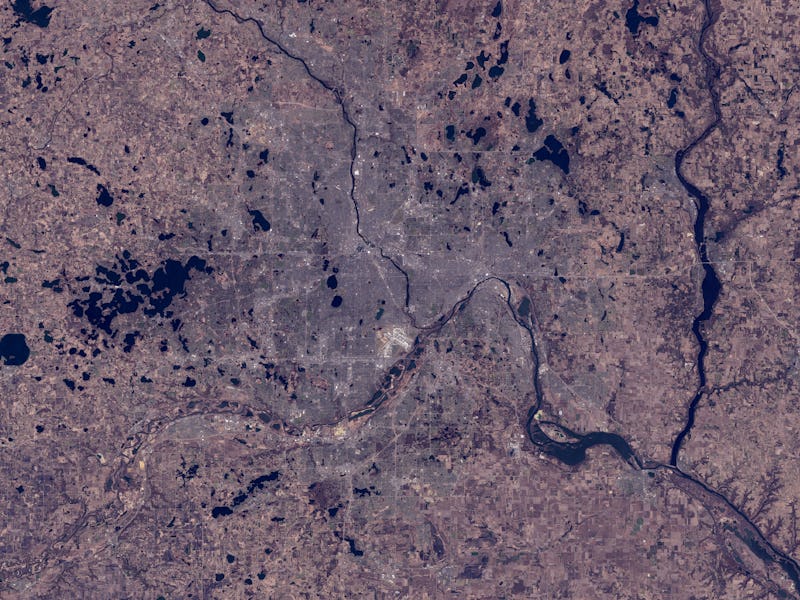The Future of Minneapolis-St. Paul: A Younger Generation Takes Over
The Twin Cities' popularity among millennials has been good for everyone in the bike biz.

Midwestern cities are being forced to find a new, post-blue collar manufacturing identities. Minneapolis and St. Paul are no exception, but unlike places like Detroit, the Twin Cities — less than 12 miles apart — have made a relatively smooth transition, becoming a curious case study for urban renewal minus the upheaval.
By 2040, the metropolitan area is expected to be home to nearly 900,000 new residents in addition to the 2.8 million people that already live here. Many of these new inhabitants will be part of a wave of international immigrants looking for a place to settle. In addition, the two age populations that will see their numbers swell are the elderly and the post-collegiate young.
That latter fact is especially important. Younger adults consistently prefer cities that are walkable or served by public transit. They’re not put off by high-density communities and are less inclined to jump into homeownership. Combined with the fluctuating nature of gas prices and the aggravations of traffic congestion, attracting that demographic requires paying profound and sustained attention to transportation trends.
Frank Douma, a University of Minnesota urban planner who specializes in transportation, says the Twin Cities, “like many U.S. metro areas that have grown since the development of the interstate highway system and do not have significant geographic restraints to grow, have a fairly low-density pattern outside of the central business districts of Minneapolis and St. Paul.” This helps creates opportunities for a lot of inbound development, giving the newly salaried an opportunity to make use of open urban spaces.
The cities have been able to pursue density responsibly largely because they’ve made significant transportation investments over the last few years, notably installing a rail line that directly connects both downtown districts and another rail that runs through downtown Minneapolis to the Mall of America and the airport. “These have served to become focal points for investment and they have created some more efficient uses for large scale developments like sports stadiums or multi-family housing or other highly-visible and otherwise infrastructure intensive type developments, says Douma. The polluted Twin Cities Army Ammunition Plant on the northern fringes of the cities and a shuttered Ford Motor Company plant are both being redeveloped.
A Metro Blue Line train.
So far so good. But how will the area deal with a high population influx over the next few decades? Douma says a multimodal approach will be needed to integrate the two cities and facilitate the flow of locals. Local officials are already ahead of this curve. Earlier this year, the Twin Cities’ Metropolitan Council drafted and adopted a 2040 Transportation Policy Plan that outlines just what the metropolitan area needs to do to adapt to new circumstances. When it comes down to it, the city is planning for less cars, more bike lanes, more rails, and more buses. It’s emphasizing projects that are environmentally friendly, bring more people in the neighborhoods together, and prize efficiency.
There are some specific projects that Douma says show the Twin Cities’ transportation future. One is the implementation of high-occupancy toll lanes that charge differently throughout the day, which “help people understand the cost of their individual trips, and encourage more efficient use of the freeway system.” Another new project of note is the rail running from the southwest and northwest parts of the metropolitan area to downtown Minneapolis.
Biking is also blossoming in the Twin Cities, despite the climate. “We’re competing with the Portland area in terms of who has a greater journey to work for a portion of bicyclists,” says Douma. “That’s something that is getting some big notice.”
The Midtown Greenway bicycle trail, in Minneapolis.
Most compelling might be the role of self-driving cars in pushing the transportation system to “meet people where they are and allow them to somewhat maintain their existing lifestyle a little bit longer than up to this point,” says Douma, adding that the technology is particularly relevant for old people and early adopters, which is pretty much the local population. He and many other transportation experts in the Twin Cities are keeping close watch on how automated vehicles tests progress in California and elsewhere.
The key to both cities’ futures is livability. What Minnesota can offer that other cities can’t is quality of life — and that means not spending one’s time in traffic.